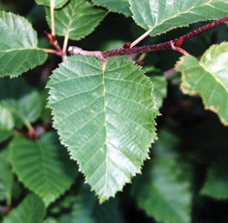
Alder is part of the birch family, commonly found in open woods, along rivers and creeks. You will know you are near water when around these plants. Their root system thrives in wet habitat.
Harvest Catkins in the Spring, leaves in Spring to late Summer, bark in Spring or Fall.
Alder can get hot enough for welding. One of the root words in Ahtna for Alder is kon’ which means fire or hot. In literal terms meaning “fire willow” kon’k’ay’.
Alder can be called “red willow” because of its red sap which is high in tannic acid.
Catkins are high in protein and can be used in soups and stews.
Leaves and bark can be used in tea for a medicinal tonic to aid digestion.
Medicinal preparations can be any of the following: bath, compress, oil infusion, poultice, salve, tea, or wash. Alder leaves are a good addition to a bath to soothe an achy body. Use for arthritis, sore muscles and general pain.
Alder chips are a preferred fuel for smoking and flavoring of salmon and other fish.
The bark can be boiled in water to produce a red dye that can be used to color hair or clothing items.
- beniic (CLW), meniic (M), loanword from Russian venik ‘broom, whisk’, steambath switch made of alder or birch leaves
- c’ekac (M) alder stick for spreading fish; red alder
Caution: Fresh inner bark can induce vomiting. Dry the inner bark before using.
Disclaimer: This article is for educational and informational purposes only, and is not intended as medical advice. Please consult with a qualified health care professional before acting on any information presented here.
